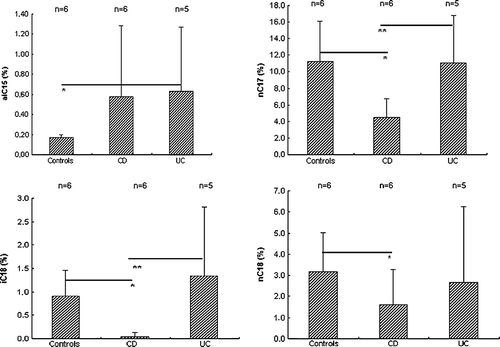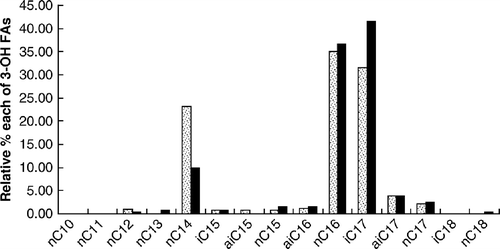Figures & data
Table I. Characteristics of patients.
Figure 1. Relative amounts (%) of some selected 3-hydroxy fatty acids in faeces of healthy individuals (Controls), patients with Crohn's disease (CD) and patients with ulcerative colitis (UC). Upper left, 3-OH ai-C15:0 (*UC versus Controls, p=0.009); upper right, 3-OH n-C17:0 (*Controls versus CD, p=0.011, **UC versus CD, p=0.026); lower left, 3-OH i-C18:0 (*Controls versus CD, p=0.004, **UC versus CD, p=0.026); lower right, 3-OH n-C18:0 (*Controls versus CD, p=0.017).

Table II. Relative percentages (mean) and standard deviations (SD) of saturated 3-hydroxy fatty acids, with indicated carbon chain lengths, in faeces of healthy individuals (C) and of patients with Crohn's disease (CD) and ulcerative colitis (UC).
